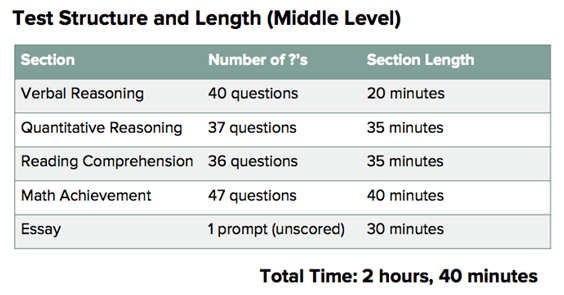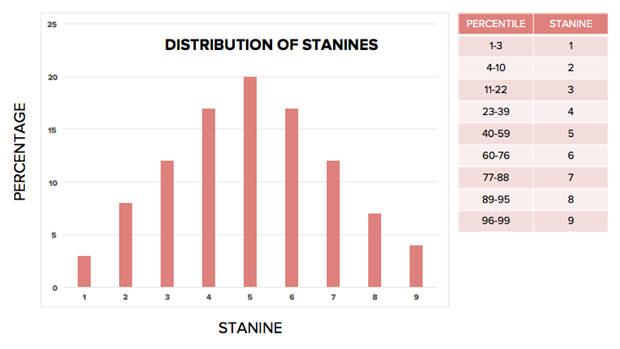ISEE Fact and Fiction: What Every Parent Should Know
本文出处:北京alevel培训 发布时间:2019-01-25 16:27:05 字体大小: A+ A-

Each year, I have the privilege of giving a presentation to 5th and 6th grade parents at the UCLA Lab School. As a guest ‘testing expert,’ I am asked to speak about the testing component of independent school admission – the Independent School Entrance Exam (ISEE).
Having worked extensively with secondary school-bound families for the past several years, I understand how much confusion and anxiety that standardized testing can yield. For many students, the ISEE marks their first experience with a high-stakes exam that has a real, foreseeable impact on their educational choices. Parents’ nerves are further frayed by competition for limited spaces at the most coveted private schools.
This post will demystify the ISEE – separating fact from fiction and providing sound advice for test preparation. After reading, I hope your anxieties are assuaged and that you are able to transmit this calm to your children.
A Quick Reality Check
Before getting into the nuances of the ISEE, I want to start by saying that a successful performance on the test is chiefly tied to a student’s academic foundation in school, not an intensive test prep course or a surplus of private tutoring. Unlike college admission tests like the SAT and ACT, which contain material that most students have covered in their coursework (or can efficiently learn), the ISEE is meant to assess a short band of academic skills that are cumulative in nature, and thus, less coachable. For instance, the Reading Comprehension section of the exam is designed to assess a child’s reading fluency and comprehension skills, which are steadfastly developed over multiple years of instruction. To say that reading skills can be dramatically ‘beefed up’ with a brief stint of preparation is simply wrong; it completely ignores the abundance of research on child development that confirms the inverse.
It is also essential to note that the ISEE is one facet of a highly nuanced application. Even if a student is not adept at standardized tests, she has the opportunity to shine on the application essays, the interview, school visiting days, teacher recommendations, and other areas. Admission directors are also assessing the fit of prospective parents into the fabric of the school’s community. Top-notch ISEE scores mean very little if the family unit is not a cultural match for the school.
If families can take heart in the excellent education their children have received thus far – and the expert intuition of admission directors – half the ISEE battle is already won.
Composition of the Test
The specific concepts covered on the exam are too cumbersome to explain in this format, so I should begin by saying that nearly everything in this section is reviewed in greater depth on the test-maker’s website (erblearn.org).
The Educational Records Bureau (ERB), the producer of the ISEE, also offers a free downloadable guide entitled ‘What to Expect on the ISEE’ for each level of the exam it administers. If you want to dive into the thick of concepts tested, I strongly recommend downloading the guide. However, if you’re looking for something a bit more digestible, start with this post and do further reading at your leisure.
Levels of the ISEE
There are currently four versions or ‘Levels’ of the ISEE that are administered based on the grade to which a student is applying. Applicants to grades 2 through 4 sit for the Primary Level exam, applicants to grades 5 and 6 sit for the Lower Level exam, applicants to grades 7 and 8 sit for the Middle Level exam, and applicants to grades 9 through 12 sit for the Upper Level exam.
Because many of the popular independent secondary schools in Los Angeles begin in 7th grade, I will examine the composition of the Middle Level test in this post. The Lower and Upper Levels of the exam are similar to the Middle Level test in overall format and length – the Lower Level is slightly shorter; the Upper Level is slightly longer – but all three levels vary in rigor and are engineered for differently-aged testers.
Test Structure and Length
The Lower, Middle, and Upper Level tests are comprised of 4 scored, multiple-choice sections followed by an unscored, hand-written essay. Two of the multiple-choice sections assess verbal reasoning and reading skills, while the other two measure proficiency in math reasoning and knowledge of specific concepts. Here is a table that reviews the structure and timing of the Middle Level test:

As you’ve probably gathered from the table, the most daunting element of the ISEE is its length. Apart from annual benchmark assessments like the CTPs or STAR testing, it is unlikely that a young student has had a comparable testing experience. Bake in the unfamiliar testing environment, the unusual format of test items, and the fast pacing of the exam, and you have a recipe for mental fatigue and stress. Fortunately, these are problems that can be mitigated by sensible test preparation, which I will address a little later.
Scoring the ISEE
There is nothing more bedeviling than attempting to explain ISEE scoring. Even after having reviewed dozens of score reports, chatting directly with reps at the ERB, and giving multiple presentations on the topic, I find myself stammering through technical terms like ‘raw score’, ‘scaled score,’ ‘percentile rank,’ and ‘stanine.’ All of these terms are importantly related and, when understood, shed light on the thoughtful design of the test; however, I’ve found that for instructional purposes, most parents don’t need to know the minutia. As far as students are concerned, there is little to be gained from discussing scoring. These conversations only amplify anxiety and leave our kids with unrealistic expectations for performance.
Here is how I would explain scoring in its simplest terms:
Based on the number of multiple-choice questions that students answer correctly, they are assigned a percentile rank from 1 to 99. For instance, if a student receives a percentile rank of ‘65’ on Verbal Reasoning, it means that she performed equal to or better than 65% of test-takers in her cohort. This cohort, also referred to as the norm group, is comprised of the most recent three years of test-takers for the same exam level. The norm group is further refined to applicants applying to the same grade.
Percentile ranks are then grouped into 9 percentile ranges known as stanines. The ERB created the 9-point stanine system to help admission directors parse out meaningful differences in students’ scores. By collapsing percentile ranks into a single stanine, the ERB is stating that students within the same stanine have roughly commensurate math or verbal ability. For instance, in the eyes of an admission director, students who receive a stanine of 5 – regardless of where they fall in the stanine/percentile continuum of 40 – 59 – are equally capable test-takers and evaluated similarly. Without the stanine system, admission directors would be forced to make judgment calls about minute differences in percentile ranks, 1 through 99, which are not as meaningful.
I’ve included a table below that shows how percentile ranks and stanines are distributed annually:

With this data in mind, it is clear that the majority of students who take the ISEE fall in the stanine range of 4 to 6 (54%), while the minority fall into the stanine ranges of 1 to 3 (23%) and 7 to 9 (23%). It is also helpful to point out that the highest stanines are attained by a miniscule fraction of test-takers. Nationwide, only 4% of students obtain a 9, while a marginal 7% of test-takers are awarded an 8.
This distribution of scores stays the same each year, and the ERB perennially tests new questions on students to ensure that the same percentage of incorrect and correct answers are produced on test day.
When chatting with parents, I emphasize the rarity of high stanines, because it helps re-orient their expectations of their children. In my experience, perfectly capable, intelligent, private school-ready students score in the 4 to 6 stanine range and are admitted to top schools year after year. In fact, directors of admission seek out these students to build balanced incoming classes. 7’s, 8’s, and 9’s are certainly impressive, but schools understand that these performances are not typical of the average applicant, nor is it necessary that all admitted students share the same propensity for testing.
Why Is the ISEE So Difficult?
Standardized tests like the ISEE can feel like an affront to our educational worldviews, particularly when we are told that no amount of studying or extra effort can guarantee a top score. As I mentioned earlier, the ISEE is engineered to award the same percentage of scores to students annually – only a combined 23% of test-takers can obtain a 7, 8, or 9.
Unlike the ISEE, the tests that our children take in school are not designed to codify them into ability groups. Unit tests, for example, measure a student’s mastery of concepts within the larger context of a curriculum. The teacher rejoices when his class averages a 95% on the test, because it proves that his students have learned the concepts and are ready for more complex problem-solving. The unit test’s purpose is to measure mastery of a discrete academic skill, not to rank students or make predictions about capability. Furthermore, there is no limit to the number of students who can achieve a perfect score or an ‘A’ on a unit test.
To make matters murkier, the ISEE contains some math and verbal material that is intended to go far beyond most students’ comprehension. The fact that older and younger peers are administered the same version of the test should be your first indication of the ISEE’s inherent difficulty. A 6th grader taking the Middle Level exam may not be aware that the test is also designed to be a challenge for 7th grade students. Consequently, she may balk at the advanced content, become anxious, and wrongfully presume that her skills are less developed than her peers’ skills. Although it may sound counterintuitive, a large part of prep for the ISEE involves priming students for the experience of treading outside their academic depths.
What the ISEE Measures
After learning about the complexity of the test and the truths of its design, the natural question emerges, ‘What does the ISEE really measure?’ The ERB’s official statement on the topic is as follows:
“The ISEE consists of carefully constructed and standardized verbal and quantitative reasoning tests that measure a student’s capability for learning, and reading comprehension and mathematics achievement tests that provide specific information about an individual’s strengths and weaknesses in those areas.”
‘Capability’ is a loaded word. After many years of reviewing ISEE scores and tracking hundreds of students’ outcomes in secondary school, I can say with certainty that the exam – as an isolated variable – is not a reliable predictor of ability or scholastic success. Because the ISEE testing population is so young and inexperienced, they are particularly susceptible to the pitfalls of standardized testing. Many students don’t know how to cope with an exam that is so speeded, mentally strenuous, and peppered with unusual question formats.
With this in mind, the goal of preparation should be to offset the influence of test-taking stressors so that students can perform to their potential on the big day.
Sensible ISEE Preparation
As it was mentioned earlier, because the bulk of ISEE content engages skills that students have developed over years, test prep should be less about lifting an academic base and more about the inculcation of testing skills. The most successful tutoring and classroom instruction hone a student’s pacing on the exam, habituate her to the question types that will appear on the ISEE, provide coping skills to manage anxiety, and advise her on the precise range of questions that are developmentally appropriate for her to answer. The ISEE does not penalize students for guessing on questions, so it is in their interest to fill out all of the bubbles on their test booklet before time is up; however, this should not come at the expense of rushing through the test and making careless mistakes on questions within a student’s wheelhouse.
In sum, smart ISEE preparation cultivates test-taking savvy and helps students to anticipate the unfamiliar format and content of the exam. Instruction that is focused on the mastery of advanced concepts – especially those outside a student’s academic bandwidth – is imbalanced and will likely do more harm than good.
Multiple Test Dates
Since August of 2016, students are able to register and sit for up to three official ISEE administrations. Historically, test takers could only take the ISEE once per admission cycle, which put a ton of pressure on students to perform to potential on a single day. ERB recognized the acute anxiety its ‘one and done’ policy engendered, so multiple testing opportunities are designed to:
·
· Guard against the likelihood of having a ‘bad day.’ We often hear stories about the student who is sick on test day and significantly underperforms.
· Allow families to selectively submit test scores to schools. Depending on test results, students may want to submit their entire portfolio of test scores, or, just submit their test scores form a single administration. Students are NOT able to individually send their highest section scores per test date.
When Will I Receive My Scores?
For students who take the exam on paper (recommended by Compass):
Families can access scores online (2-3 days) if they pay $40 for ‘expedited scoring’ – this option is availed during the online registration process.
If you don’t pay for expedited online scoring, you may access your online report within 7 days after the test.
For students who take the exam on a computer at a Prometric site (not recommended by Compass):
Scores are available online immediately after the test is graded (2-3 days after the test administration). This is the only upside of computer-based testing; many students balk at the foreign computer-based testing format.
When do schools receive ISEE score reports?
If a family opts to have their scores automatically submitted to schools (families can select as many schools as they’d like), they are typically accessible to school staff 2-3 days following the test date.
If families do not wish to have their scores automatically submitted, they can review their scores, determine which test administrations they’d like to submit, and send those results to as many schools as they’d like free of charge. Electronic submission is instant.
Moving Forward
For more information about test preparation options, please review our ISEE services page. If you have further questions, I strongly advise that you connect with a Compass director, or, email me directly at matt@compassprep.com.
Thank you for reading and best of luck to your children as they tackle the ISEE. By having an informed, balanced perspective on the ISEE, you will better position your students to perform to their potential and secure admission to schools that match the needs of your family.